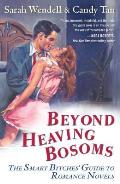
Recently,
LA Times columnist Meghan Daum
wrote a dismissive article about the romance novel boom. After calling them bodice rippers, she went on to say, "It's so easy to poke fun at contemporary romance novels that there's really no sport in it. The plots, by definition, are formulaic; the prose manages to be at once overwrought and underdeveloped; the covers, well, they're where that famous, flaxen-haired slab of manhood named Fabio got his start."
Our immediate thought was: Actually, it's not easy to poke fun at romance novels. Barbs are funny only if they hit the mark; it ain't funny if it ain't true. Daum's barbs, by and large, don't hit the mark, which is saying something when the target is as big as the romance industry. Like most people who are certain in their unflattering assumptions about the romance genre, Daum has very little experience with it — she is, in fact, a self-professed snob. It's never entirely clear why the snobs are so afraid to try one; is it fueled by the fear that cooties will swarm up their arm and enter their brain, and before they know it, they're stalking Nora Roberts and covering every flat surface with kitten appliqués?
The usual assumptions about romance novel form tend to go like this: There's the hero and heroine, but they initially hate each other's guts, and at some point the hero rapes her (rip goes the bodice!), but she learns to like it, and then there's some sort of improbable separation, but they finally get back together, and hooray, Happily Ever After.
This is a somewhat accurate outline, as far as it goes — except for two things. One: it mostly describes a particular style of historical romance. Two: this style was prevalent about twenty-five to thirty-five years ago, and had stopped being the norm by the mid-to-late 80s. Subscribing to that view of romance novels is the equivalent of putting on your pantsuit and your rhinestone medallion, then showing off your hot disco moves because you're hip, man, you're with it. Because bodice rippers describe a very particular type of romance, people who lump Harlequin into that category (and people who don't know anything about romance always do) is as quaint and hilarious as hearing people assert that all science fiction novels are set in outer space, or that all fantasy novels feature elves and dwarves battling dragons, or that comics are only about superheroes.
Romances do, in fact, conform to generic constraints — but so do all genres. Dear critics: this is an operating feature of genre fiction, not a bug. To strain another nerd analogy: think about it in evolutionary terms. Every story out there originated from a few common ancestors. Stories within the same phylum share underlying structural similarities, but they exhibit a dizzying amount of variation as they adapt to different environments. The beauty of genre fiction lies in seeing the ways authors create endless forms most beautiful, given the constraints of their generic form, the demands of their imagination and popular demand.
And then there's hybrid vigor, too: romantic elements exist in every fiction genre you can think of, and romance itself borrows liberally from other genres. Thanks to this diversity, romance isn't just bigger and queerer than you suppose, it's bigger and queerer than you can suppose. There are a million sub-genres out there, and they range from sweet historical romances set in Regency-period England to scowling Greek tycoons and their virginal boardroom mistresses to multi-book epics about demon-battling warriors. Daum looks at this diversity, and casts it as an attempt at writers attempting to pander to individual reader wish fulfillment, instead of embodying the many different ways people fall in love and build their own families. Daum jokes that she's willing to read romances only if they fulfill only her personal Ralph Fiennes fantasies; the average romance reader is much more omnivorous, and capable of empathizing with characters radically different from her.
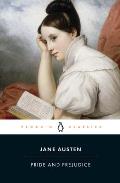 The truth is, the books are both better than you know, and worse than you can imagine. We seasoned romance veterans have looked into the abyss, the abyss looked right back, and lo, it was filled with virgin widows, and vhampires whith rhidiculous nhames, and the most terrifying collection of brownface caricatures this side of Running Fox and Sheik Abdullah. We've also scaled the heights, and found stories that portrayed some of the hardest, messiest aspects of human life, and did it beautifully — from dealing with PTSD, to rebuilding a life when you're left with nothing, to misfits and outsiders finding love, acceptance and redemption. The elements that make a ripping good read in the romance genre are the same as any other fictional narrative. Fascinating, realistic characters with whom you empathize? Larger and more complex questions asked and sometimes answered in the narrative? Writing that draws you in, welcomes you and asks you to keep reading, no matter what else you have to do that day? Plots that feature action, mayhem, dark arts, humor and wit, skillful writing and eloquent tension? It's wonderful when all those things combine, and it's not as rare in romance as the haters think.
The truth is, the books are both better than you know, and worse than you can imagine. We seasoned romance veterans have looked into the abyss, the abyss looked right back, and lo, it was filled with virgin widows, and vhampires whith rhidiculous nhames, and the most terrifying collection of brownface caricatures this side of Running Fox and Sheik Abdullah. We've also scaled the heights, and found stories that portrayed some of the hardest, messiest aspects of human life, and did it beautifully — from dealing with PTSD, to rebuilding a life when you're left with nothing, to misfits and outsiders finding love, acceptance and redemption. The elements that make a ripping good read in the romance genre are the same as any other fictional narrative. Fascinating, realistic characters with whom you empathize? Larger and more complex questions asked and sometimes answered in the narrative? Writing that draws you in, welcomes you and asks you to keep reading, no matter what else you have to do that day? Plots that feature action, mayhem, dark arts, humor and wit, skillful writing and eloquent tension? It's wonderful when all those things combine, and it's not as rare in romance as the haters think.
What's more, you've probably read a romance novel and weren't even aware of it. Pride and Prejudice — most of Austen, honestly — set the blueprint for romantic conflict that we use today. Read any Sharon Shinn, Catherine Asaro, or Lois McMaster Bujold? The majority of their books feature central love stories in a science fiction context.
Which brings up the accusation that female SF authors just write "romance novels in space" — or pick any genre, really. Thriller, fantasy, mystery: this accusation tends to be leveled against female authors, because it's the quickest way to devalue and denigrate the writing. If you write romance, you might as well slap on a lacy pink EP (for Emotional Porn) on your bodice.
But fiction, ultimately, is about humans: it's about how humans interact with other humans, and how humans interact with their cultures and institutions. The various genres narrow the focus and give us specific contexts to explore those interactions, but the heart of fiction is still humanity, in all its propensity to put the secret of life in its pants and forgetting it's there and sitting down. Finding love and creating family is fundamental to the human experience. It's why it looms so large in the fictional landscape. Why, exactly, are we so disdainful and dismissive of fiction that focuses on exactly these pursuits?
We will admit, however, that because more romances are published every year than any other genre, the sheer number of terrible romances is overwhelming, and the odds of a neophyte striking gold at first try are low. People who are curious about dipping their toes into the pool need friendly guides to take them by the hand, to go, "Connie Mason? Oh, honey. Oh, no. Here. Let me show you where the Laura Kinsale is shelved." Therefore, behold: a survey of some of the variety in romance that can sneak across the boundaries of your assumptions about romance novels and charm your pants off, created by Sarah, Candy, and our Bitchy friends on Twitter.
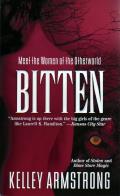 Bitten by Kelley Armstrong is one of Sarah's all-time favorites, and the beginning of the "Women of the Otherworld" series. The only female werewolf in the world finds herself back among her old pack in Toronto, facing her new self and hella-creepy enemies.
Bitten by Kelley Armstrong is one of Sarah's all-time favorites, and the beginning of the "Women of the Otherworld" series. The only female werewolf in the world finds herself back among her old pack in Toronto, facing her new self and hella-creepy enemies.
The Immortals After Dark series by Kresley Cole is heavily steeped in Norse mythology, with heroines and heroes possessing incredibly complex powers and plots that explore evil, goodness, and other easily-solved issues, these books are sharp, savvy, and so much freaking fun. Start with A Hunger Like No Other — but don't stop there.
Lord of Scoundrels by Loretta Chase: Somebody Candy knows once claimed that there are no good romances about strong, strange women falling in love with strong, strange men, but Lord of Scoundrels proves that false. It features two strong-willed, eccentric characters trading barbs and keeping one step ahead of each other; think His Girl Friday, except the heroine doesn't become a disappointing soggy mush at the end the way Rosalind Russell does. This is probably one of the most reliable converters of non-romance readers; everybody we've recommended this to, from classicists to math professors to psychologists, have loved it.
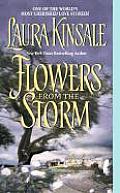 Laura Kinsale's Flowers from the Storm, For My Lady's Heart, and The Shadow and the Star will make off with your expectations of historical romance fiction and only return them to you when you're apologizing for your assumptions and begging for a handkerchief and (in the case of For My Lady's Heart) running for a Middle English dictionary.
Laura Kinsale's Flowers from the Storm, For My Lady's Heart, and The Shadow and the Star will make off with your expectations of historical romance fiction and only return them to you when you're apologizing for your assumptions and begging for a handkerchief and (in the case of For My Lady's Heart) running for a Middle English dictionary.
The In Death series by J.D. Robb, a pseudonym for Nora Roberts takes place in a New York City of the future, and features a recurring mystery-solving, crime-fighting duo and some seriously scary villains.
Bet Me by Jennifer Crusie, as well as older titles such as Anyone But You and her newer collaborations such as Agnes and the Hitman, are witty, wise, and sharp, breaking most expectations of contemporary romance and creating memorable heroines and stories instead. Those who are thoroughly tired of the white picket fence fantasy will especially enjoy Crusie's heroines, many of whom are unabashedly urban and happy to be child-free.
Patricia Gaffney's To Love and to Cherish features that beautiful rarity: a nice guy hero who's not cloying. The follow-up novel, To Have and To Hold, which is set in the same world, features a thoroughly debauched but self-aware hero — another rarity.
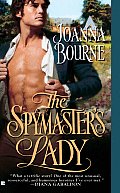 Joanna Bourne's The Spymaster's Lady is a tough one: ignore the cover. Hell, ignore the title. Ignore every romance trope that decorates the outside, and enjoy the utterly brilliant, word-by-word perfection of a story well told. It's taut, marvelous, and, if you blink past the man-titty on the cover, you discover excellence. Trust us on this one.
Joanna Bourne's The Spymaster's Lady is a tough one: ignore the cover. Hell, ignore the title. Ignore every romance trope that decorates the outside, and enjoy the utterly brilliant, word-by-word perfection of a story well told. It's taut, marvelous, and, if you blink past the man-titty on the cover, you discover excellence. Trust us on this one.
For spicy, sassy heroines and hilariously honest men, check out Talk Me Down by Victoria Dahl, Flat-Out Sexy by Erin McCarthy, and Instant Attraction by Jill Shalvis. And you cannot go wrong with Lisa Kleypas, especially with explorations of attraction across social boundaries. Whether she's writing historical or contemporary, Kleypas is marvelous.